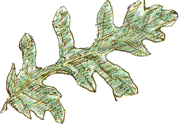
|
PoppyMonday, 23rd September 2002, West Yorkshire |
![]()
![]()
![]()
![]() Rocks |
History |
Workshop |
Links |
Home Page
Rocks |
History |
Workshop |
Links |
Home Page
![]()
 A small hoverfly lands on a poppy that is blown around in the afternoon breeze on a grassy verge at the edge of old railway track now adapted as a walkway in the village of Ackworth, south of Pontefract, West Yorkshire. The pepperpot seedheads are much smaller than those of the garden opium poppy that I have drawn in previous years in this diary.
A small hoverfly lands on a poppy that is blown around in the afternoon breeze on a grassy verge at the edge of old railway track now adapted as a walkway in the village of Ackworth, south of Pontefract, West Yorkshire. The pepperpot seedheads are much smaller than those of the garden opium poppy that I have drawn in previous years in this diary.Cross-bedding
 Here at Bell Lane car park, Ackworth Moor Top, there's a cutting by the old railway of soft sandstone. There must have been frequent changes in the current in the river delta in which this sand was laid down some 300 million years ago in the Carboniferous period. When I look at cross-bedded sandstones, or current-bedded sandstones, as they're also referred to, I feel that effectively I'm looking at a cross section of a set of underwater sand-dunes.
Here at Bell Lane car park, Ackworth Moor Top, there's a cutting by the old railway of soft sandstone. There must have been frequent changes in the current in the river delta in which this sand was laid down some 300 million years ago in the Carboniferous period. When I look at cross-bedded sandstones, or current-bedded sandstones, as they're also referred to, I feel that effectively I'm looking at a cross section of a set of underwater sand-dunes.Knopper Gall



As we walk along a pavement in the village we find that we're crunching over dozens, in fact hundreds of these knopper galls. The word knopper derives from knop; a small rounded protruberence, often decorative, such as a stud, a tassel or a knob.They are caused by the gall wasp Andricus quercuscalicis. The larva develops inside a hard inner gall inside the knopper. As you can see from my sketches the gall develops from an acorn.
Turkey Oak
 The generation of gall wasps that hatch from these galls in the spring find their way to Turkey oaks, an introduced species in Britain, where they lay their eggs on the catkins. From these both males and females hatch to lay the eggs that will produce the knopper galls.
The generation of gall wasps that hatch from these galls in the spring find their way to Turkey oaks, an introduced species in Britain, where they lay their eggs on the catkins. From these both males and females hatch to lay the eggs that will produce the knopper galls.The turkey oaks must take some finding. We walked a quarter of a mile before we passed one. But the system evidently works to judge by how plentiful the knopper galls are.
![]()
Richard Bell,
wildlife illustrator
E-mail; 'richard@willowisland.co.uk'
![]() Next page |
Previous page |
This day last year |
This month |
Nature Diary |
Home Page
Next page |
Previous page |
This day last year |
This month |
Nature Diary |
Home Page
![]()